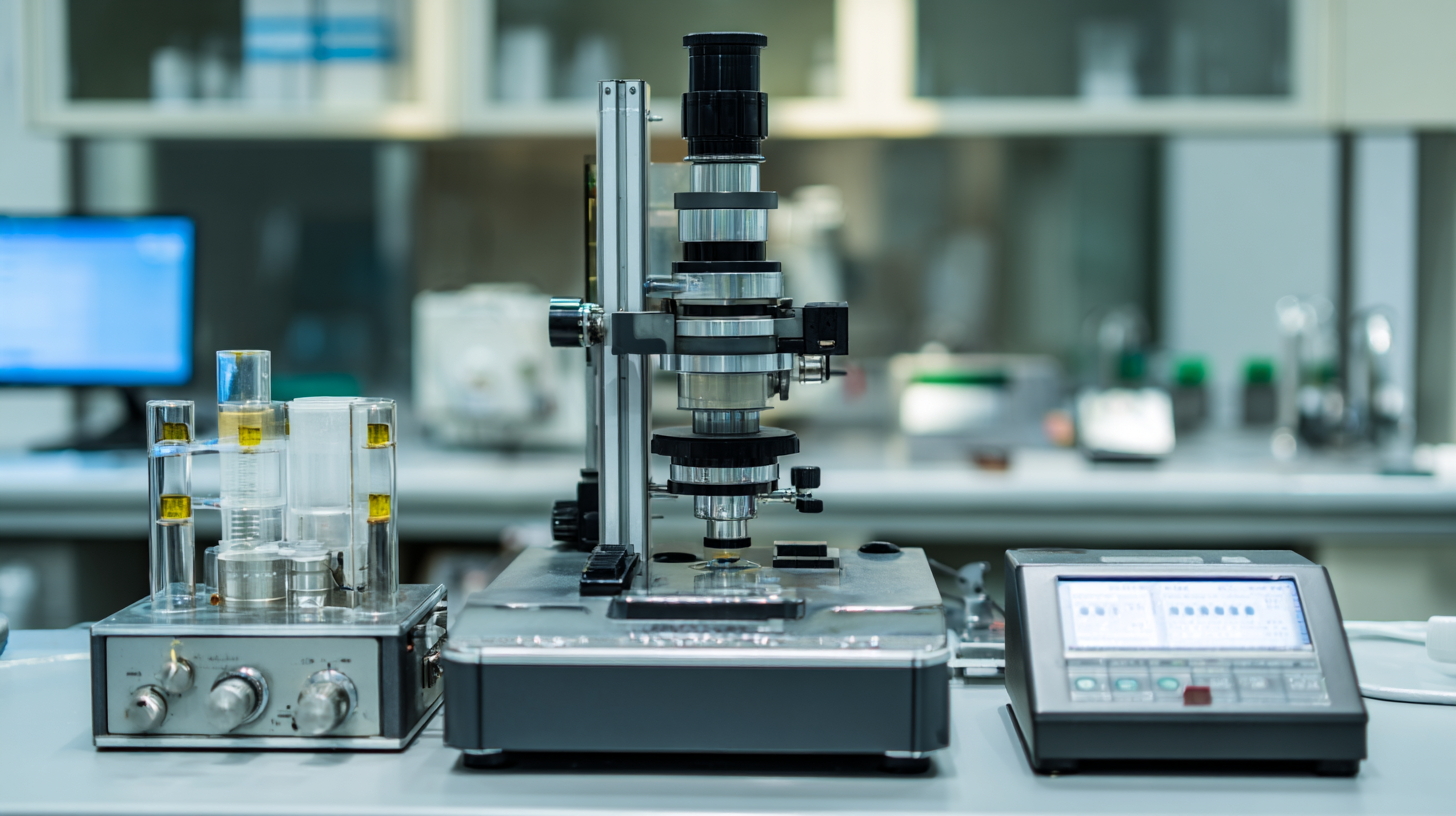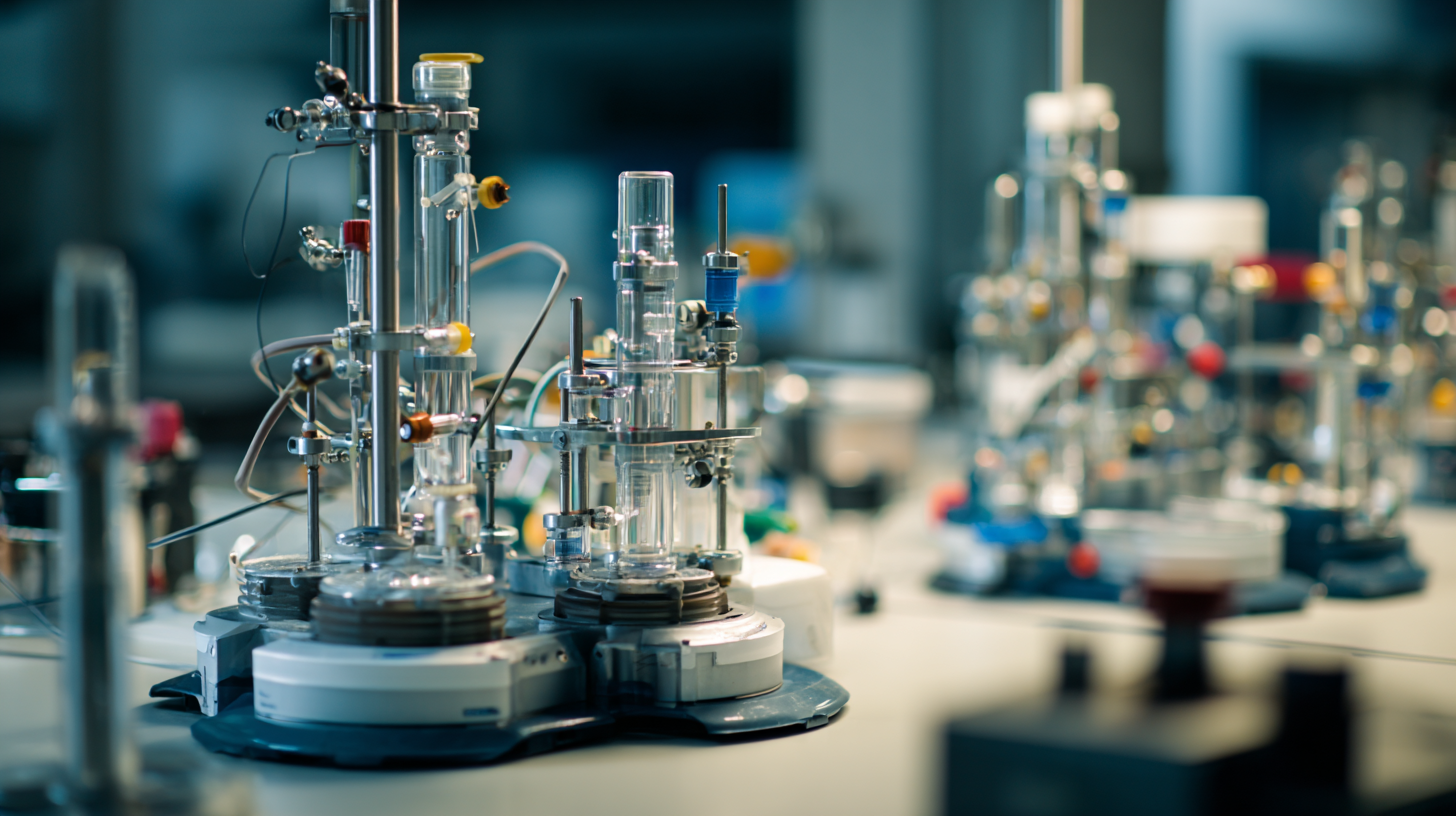

Mastering Best Laboratory Tools and Equipment for Efficient Experimentation
In today's fast-paced scientific landscape, the role of high-quality Laboratory Tools and Equipment is more critical than ever in driving research and experimentation forward. As the global market for laboratory equipment is projected to reach approximately USD 36.5 billion by 2025, driven by advancements across various fields such as biotechnology and pharmaceuticals, the emphasis on quality and efficiency has never been greater. With the rise of "Made in China" products that dominate international sales, it's essential for laboratories worldwide to recognize the value of top-tier tools that offer reliability and precision. Investments in modern laboratory technologies not only enhance productivity but also ensure adherence to stringent regulatory standards, ultimately fostering innovation in scientific discovery. Understanding and leveraging the best of these tools will enable researchers to achieve superior outcomes and contribute meaningfully to their respective fields.

Essential Laboratory Equipment Every Researcher Should Have
 In any research setting, having the right laboratory equipment is crucial for achieving reliable and efficient results. Essential laboratory equipment not only enhances productivity but also ensures safety and accuracy. Every researcher should start with the basics, such as a high-quality microscope, which enables detailed analysis of samples at a cellular level. Additionally, a reliable centrifuge is indispensable for separating substances within mixtures, allowing researchers to isolate components for further study.
In any research setting, having the right laboratory equipment is crucial for achieving reliable and efficient results. Essential laboratory equipment not only enhances productivity but also ensures safety and accuracy. Every researcher should start with the basics, such as a high-quality microscope, which enables detailed analysis of samples at a cellular level. Additionally, a reliable centrifuge is indispensable for separating substances within mixtures, allowing researchers to isolate components for further study.
Beyond the basics, having access to various analytical instruments, such as spectrophotometers and pH meters, can greatly improve the accuracy of experiments. These tools help in quantifying substance concentrations and assessing the chemical properties of samples.
Furthermore, an organized workspace equipped with proper storage solutions, like chemical cabinets and labeled containers, fosters a safe and efficient environment for conducting experiments, reducing the risk of contamination or accidents. Equipping a laboratory with these essential tools will ensure that researchers can focus on their scientific inquiries, leading to fruitful discoveries and advancements in their fields.
Key Features to Look for in Lab Tools for Maximum Efficiency
When selecting laboratory tools and equipment, efficiency should be at the forefront of decision-making. According to a recent report by the National Institute of Standards and Technology (NIST), effective laboratory tools can increase productivity by up to 30%, streamlining processes and enhancing accuracy. Key features to consider in lab tools include precision, durability, and user-friendliness. For instance, instruments designed with digital readouts, such as high-quality pipettes and measuring devices, allow for quick and accurate results, thus minimizing human error and time spent recalibrating equipment.
Moreover, the integration of smart technology into laboratory tools is another critical factor. The Lab Instrumentation Market Report indicates that intelligent lab equipment not only provides real-time data analysis but also automates routine tasks. This advancement enables researchers to focus on complex problem-solving instead of time-consuming manual procedures. As laboratories continue to evolve, investing in high-quality equipment that incorporates these essential features will lead to improved experimental outcomes and overall operational efficiency in the lab.
Safety Gear Checklist: Protecting Yourself in the Lab Environment
When conducting experiments in a laboratory environment, safety should always be the top priority. A comprehensive safety gear checklist is essential to protect researchers from potential hazards. According to the Occupational Safety and Health Administration (OSHA), approximately 40% of workplace injuries occur in the lab, highlighting the need for proper protective equipment. Key items on this checklist should include safety goggles to protect eyes from hazardous substances, gloves suited to the materials being handled, and lab coats to shield skin and clothing from spills.

Additionally, the importance of proper footwear cannot be overlooked. Non-slip, closed-toe shoes are critical, as slips and falls are prevalent in laboratory settings. The National Institute for Occupational Safety and Health (NIOSH) reported that safe lab practices, combined with the correct personal protective equipment (PPE), can significantly reduce the likelihood of accidents. Furthermore, it is advisable to include items like face shields when working with volatile materials and fume hoods for experiments that generate harmful vapors. By adhering to a stringent safety gear checklist, researchers can create a secure working environment that promotes safety alongside efficient experimentation.
Organizational Strategies for Streamlining Lab Workflow
In modern laboratories, efficiency is paramount, and organizational strategies play a vital role in streamlining workflow. One effective approach is to categorize tools and equipment based on their functionality and usage frequency. By keeping frequently used items within easy reach while storing less common equipment in designated areas, researchers can minimize time spent searching for tools and maximize productivity. This systematic arrangement not only saves time but also reduces the likelihood of misplacing critical instruments, significantly enhancing the overall lab environment.
Another essential strategy involves implementing a standardized labeling system. Clear and consistent labeling of shelves, drawers, and containers helps all team members quickly locate what they need, fostering a collaborative and efficient workspace. Further, digital tools such as inventory management software can be utilized to keep track of supplies and equipment in real-time, reducing the risk of shortages and ensuring that vital resources are always on hand when needed. These organizational techniques promote not only a more efficient workflow but also a safer laboratory atmosphere, where everything is orderly and accessible.
Maintenance Tips for Prolonging the Life of Your Laboratory Equipment
Maintaining laboratory equipment is essential for ensuring efficient experimentation and extending the lifespan of instruments. Regular maintenance not only increases productivity but also enhances the accuracy of results. According to a recent industry report, approximately 30% of laboratory equipment failures can be attributed to inadequate maintenance practices. By adhering to proper maintenance protocols, laboratories can significantly reduce downtime and operational costs.
**Tip 1: Regular Calibration**
One of the best practices to prolong the life of your laboratory instruments is regular calibration. This process helps identify any discrepancies in performance, ensuring results are reliable. Industry standards recommend that calibration occurs at least annually, or more frequently depending on the frequency of use. This preventive measure can prevent costly errors and the potential need for expensive repairs.
**Tip 2: Proper Cleaning**
Another critical aspect of equipment maintenance is proper cleaning. Residue buildup can lead to corrosion and malfunctions, with studies indicating that neglected cleaning protocols can decrease equipment life by up to 25%. Implementing a routine cleaning schedule, tailored to each instrument’s specifications, can help maintain optimal performance and reliability.
By integrating these maintenance tips, laboratories can safeguard their investments and contribute to a more effective research environment.
Mastering Best Laboratory Tools and Equipment for Efficient Experimentation
This chart represents the average maintenance frequency of various laboratory tools and equipment to ensure their longevity and efficiency. Regular maintenance can significantly prolong the life of your lab instruments.





